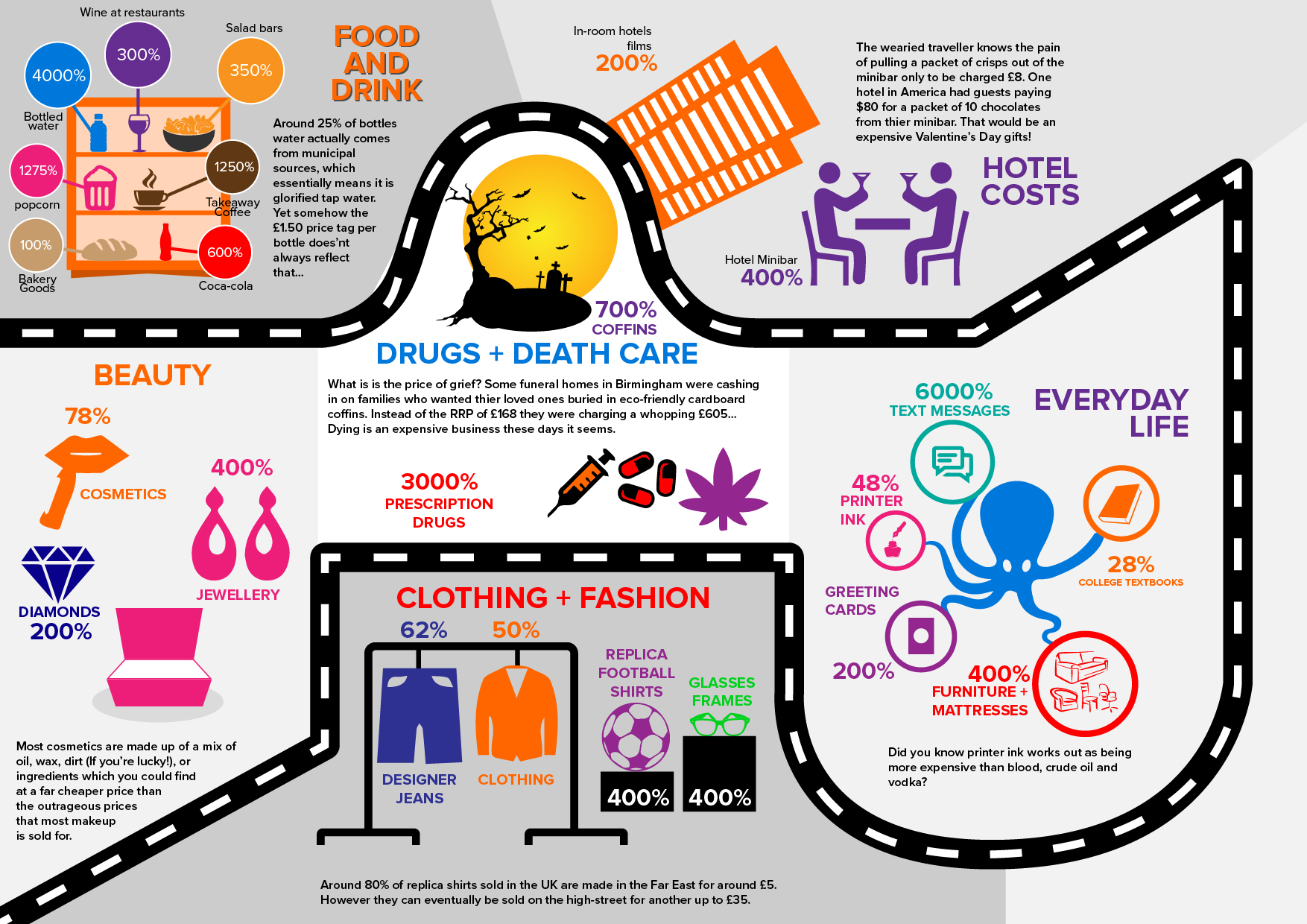The mischievous markups and profit margins… At Wholesale Clearance it has been something we have mostly managed to avoid, but as sellers of wholesale goods, we often scoff when we see the extortionate prices of the same goods sold in other shops. We decided that we wanted to delve a little deeper into this world to see if we could discover which items or areas have the highest markups and profit margins.

Huge profit margins of some products
As a business we know the reason for markups and why they are needed. The main argument is that it accounts for labour costs or other aspects of the business, so that the product maintains a healthy profit margin. However, with much of data we found, even this argument doesn’t quite ring true.
If we take bottled water as an example, with its whopping markup of 4000%, can labour costs or other factors really account for all of this? With cheap packaging and with the water often coming from a cheap, municipal source and even if we factor in marketing costs these companies are still making huge profits. A company has to make profits to survive of course but where do we draw the line and where does it become pure greed?
The same could be said for popcorn at concession stands in cinemas, with the huge markup of 1275%. Popcorn kernels can be bought at cheap prices in bulk, with the packaging also being of low cost. Raising the price at confectionery stalls used to mean that ticket prices could be lowered for us to be able to enjoy films at decent rates; however as many of us know these days ticket prices are anything but low, so is this still the real reason that the price is still so high?
We found delving into this world a fascinating and eye opening experience and hopefully you will enjoy our infographic. However, why not try to work out a markup percentage yourself?
To work out a markup percentage of something, it is fairly simple. Firstly, you have to do is subtract the production price or the amount it was bought for from the price it is sold at. You then would divide that number by the original production or buying price. Multiple that number by 100 and voila, you have your markup percentage.
 Wholesale
Wholesale 
Comments are closed.